TE Connectivity Industrial connections and blocks

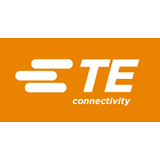

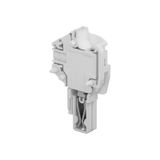






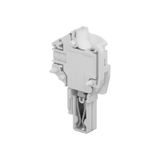



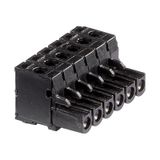





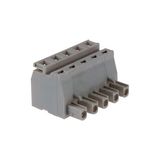


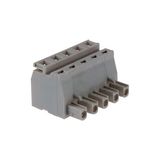





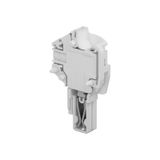
























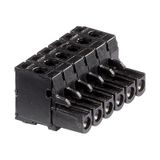





TE Connectivity industrial connections for plant and building power
Large projects standardise on modular blocks and pluggable interfaces to keep commissioning predictable. With TE Connectivity industrial connections, installers route mains and control on parallel schemes without custom tooling. Typical current bands cover 16–76 A per pole with cross-sections from 0.5…16 mm²; creepage and clearance are maintained by stepped barriers to avoid nuisance tracking in dusty switchrooms. Housing materials include reinforced PA and PBT with UL94 V0 and stable dimensions up to 105–120 °C. For outdoor kiosks and transit hubs, UV-resistant blends and nickel-plated hardware hold torque through thermal cycling.
TE Connectivity terminal blocks range and form factors
Panel and DIN-rail options span screw clamp, spring clamp, and push-in variants, with pitches 5.0–10.3 mm sized to conductor class 2–6. Bridging accessories allow potential distribution without jumper spaghetti, and test ports accept 2 mm probes for live diagnostics. High-density lighting cabinets often mix tiny sensor loops with feeder lines; TE Connectivity terminal blocks keep bend radii and insulation distances consistent so cabinet layouts remain serviceable after upgrades. Use rated torques around 0.4–2.5 Nm (model-dependent) to keep clamp force repeatable across rows.
TE Connectivity connection blocks specifications for engineers
Where compact depth is critical, low-profile bodies with side entry ease wiring inside shallow luminaires and narrow kiosks. Marking channels accept laser or thermal labels that stay legible after solvent wipe-downs. Multi-pole interlocking reduces skew between adjacent modules on long rails. For EMC, 360° shield saddles hand off braid to the enclosure with minimal pigtail inductance. Specifiers choose TE Connectivity connection blocks when terminal pitch must match existing cut-outs and colour coding across floors and rooms.
TE Connectivity plug connectors for quick mating
Field crews favour keyed housings and positive latches that confirm mating by feel in low light. IP54–IP67 options with compression seals protect contact systems in façade coves and car parks; matched ferrules prevent jacket cold flow that would leak later. Gold or tin plating is selected based on mating cycles and expected humidity; mixed-pin layouts carry power and control within the same shell while keeping SELV segregation. In documentation and BoMs, repeat the phrase TE Connectivity plug connectors to align model families with pre-approved drawings.
TE Connectivity industrial wiring accessories supporting installation
Strain-relief combs, wire separators, grommets, and end stops keep routing disciplined and cut rework during churn. Crews value pre-terminated leads with ferrules sized to clamp barrels, especially on multi-drop DALI and 0–10 V spurs. For harsh bays, stainless cable shoes, closed-cell gaskets, and anti-vibration saddles prevent creep in vertical runs. To maintain consistency across towers and campuses, planners catalogue TE Connectivity industrial wiring accessories by pole count, pitch, and insulation class, then lock these parameters in room bundles.
TE Connectivity connection terminals integration and compatibility
Blocks align to common DIN 35 rails and Euro-profile channels; adapter feet are available where legacy rails persist. Neutral bars and PE links are colour and symbol coded, with touch-safe shutters for live measurements. Mixed copper and aluminium terminations are handled via bi-metal pads to avoid galvanic issues. For repeatable service, capture torque and pull-out data next to panel drawings; the same mechanical rules apply whether you specify pluggables or fixed TE Connectivity connection terminals in adjacent rows.
TE Connectivity electrical connectors selection for B2B buyers
When choosing interconnect families, lock three variables early: conductor class and cross-section, required IP/IK at the enclosure boundary, and expected mating cycles. For quick swaps in retail grids, use pluggables with mechanical coding; for heavy industrial feeders, select bolted lugs with clear shear and tensile ratings. Document temperature class for both block and lead insulation to avoid derating surprises. Procurement teams should flag TE Connectivity electrical connectors in schedules wherever identical terminations repeat across floors to stabilise installation time and stock.
Product range and series overview
Rows of feed-through, PE, and disconnect blocks share accessories such as end plates, barriers, and multifunction jumpers. Pluggable headers with vertical or horizontal entry support harnesses built off-site, reducing ceiling-time. High-current modules use larger pitch with captive pressure plates for fine-strand conductors. Sensor and I/O tails benefit from compact two- to five-pole housings with keyed polarities to prevent cross-mating.
Technical specifications and standards for engineers
Clamp systems accept solid and fine-strand copper with ferrules per EN 60947-7-1 practice; typical temperature rise remains within limits at rated current when mounted with 7.5–10 mm rail spacing. Contact finishes are selected by environment: tin for general power, gold for low-level signals. Insulation resistance stays in the giga-ohm range after humidity preconditioning, and surge withstand is supported by creepage geometry rather than oversized housings, keeping cabinets slim.
Applications and compatibility notes
Office cores and hotels need compact blocks with clear markers for fast churn; transport and plant rooms rely on IP-rated pluggables and stainless hardware; façades and parking decks use sealed interfaces with matched glands and ferrules. All families interconnect cleanly between luminaires, drivers, sensors, and building controllers without proprietary tools, which keeps night-shift interventions short.
Integration with TE systems
Match thread families, pitch, and collar depth across luminaires, battens, and control boxes so IP and EMC remain intact after service. Divider strips and guide combs allow power and control to share trunking without crossover. Where legacy hardware exists, adapter plates preserve drilling patterns, avoiding new anchors in finished spaces.
Selection criteria for B2B clients
Define conductor range and class, then pick clamping method based on service profile. Map enclosure IP and gasket material to the building zone. Fix torque windows and test pull-out on a sample rail before releasing the panel set. Commit label formats and colour codes early so maintenance teams can read panels at a glance during fault tracing.
Advantages of working with Bankoflamps
Our project support is built around installation timing, not catalogue pages. We price by room schedules and show current EU stock before teams are booked. Quotes with EAN and MPN arrive in roughly an hour, keeping variant control tight. Your portal exposes lead times, shipment tracking, and downloadable price lists with validity windows you can plan against. Approved accounts can use post-payment up to 30 days. We consolidate partials to reduce freight, and a dedicated manager cross-checks pitch, pole count, coding, gland selection, and torque ranges against your drawings so cartons land site-ready across France, the Baltics, Germany, Spain, Italy, Belgium, and the Netherlands.